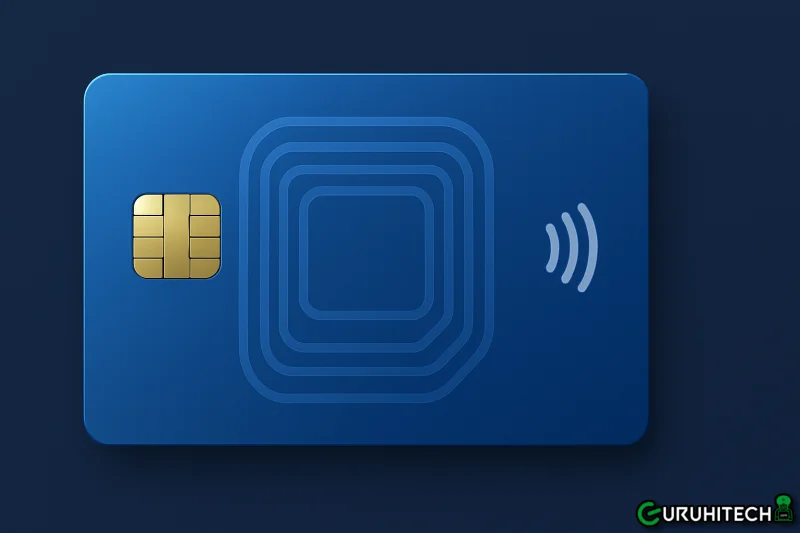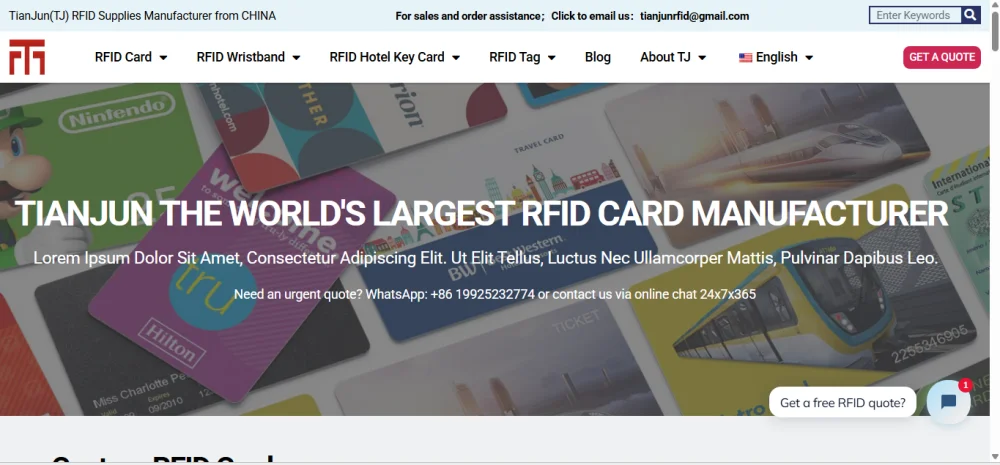Understanding RFID Frequencies: Low, High, and Ultra High Explained

Radio frequency identification technology uses the radio waves to connect, yet there are many types of radio waves. Depending on the type of RFID system, the frequency used can differ and knowing this can help you decide on the right RFID tags or cards.
The frequency used helps determine how far an RFID reader can read the card, how quickly it works and what it is used for. This article will outline Low Frequency, High Frequency and Ultra High Frequency RFID frequencies, explaining how they are put to use in daily life.
Understanding the different frequencies of RFID card will benefit you, whether you are just starting to use it or want to make it better.
What Is RFID Frequency and Why Does It Matter?

It describes the frequency or range of radio waves used by RFID devices to connect with each other. RFID systems, like radio stations, use individual frequencies to operate. Different frequency ranges are chosen for use in applications because of their unique qualities.
Selecting the proper frequency makes it possible for an RFID chip card to be read at a certain distance, transfer data faster and transmit through metal or liquid barriers. In other words, some sounds are more suited for a given situation or environment than others.
Knowing about RFID frequencies is useful as it allows you to choose the right technology for what you require. Depending on whether you need to keep track of assets, manage access or oversee payments, using an appropriate frequency makes the system more efficient and reliable.
How the TJ NFC Tag Supports Multiple RFID Frequencies
With TJ NFC Tag, you can use RFID products that operate on Low Frequency (LF), High Frequency (HF) and Ultra High Frequency (UHF) bands. This allows them to create custom-made solutions for nearly any application or industry. With different products available, businesses can use them to either simply manage access or more complexly monitor their supply chain.
Having a skilled team allows them to produce RFID cards or tags with strict quality regardless of the frequency. TJ NFC Tag has the experience to provide all kinds of reliable LF, HF and UHF NFC tags suited for different purposes. It is also possible for clients to adjust designs, encoding and materials depending on what they require.
RFID membership card allows you to use the best technology, get personalised services and have dependable support to successfully implement an RFID solution in your company. This focus on advancements and customers ensures businesses remain competitive in today’s rapidly changing market.
Low Frequency (LF) RFID: Features and Uses
These RFID systems are designed to operate at a frequency of 125 KHz. Most people know that these cards and tags work best within a range of about 10 centimeters. Even with its limited range, LF RFID is able to function effectively near metal and water, unlike other RFID types.
LF RFID is commonly found in building key cards and in animal monitoring, because both require reading from close up. It’s frequently used for managing devices and equipment when there are many people, machines or tools disrupting the signal.
Since LF RFID technology is both straightforward and affordable, many companies trust it for simple applications with a limited reading range.
High Frequency (HF) RFID: Features and Uses
High Frequency RFID operates at 13.56 MHz and is used by a majority of applications. Its maximum distance is 1 metre, making it useful for a variety of everyday uses.
These tags are commonly used for contactless payment cards, library book checkouts, and public transit services. These include ISO/IEC 14443 and NFC (Near Field Communication) standards that help any smartphone or similar device read these cards easily.
HF RFID is a good option for businesses and consumers as it offers a smooth service that is both secure and convenient.
Ultra High Frequency (UHF) RFID: Features and Uses
Operating within the 860 to 960 MHz band, Ultra High Frequency RFID gives longer reading range than the other types, sometimes reaching up to 12 meters. As a result, UHF RFID works well for tasks that involve scanning items from far away.
RFID at the UHF level is often used in logistics, supply chains and keeping track of inventory. The quick reading of many tags by this technology allows it to handle all the products that fit in a typical warehouse or retail store.
However, since UHF RFID is more affected by both metal and liquids, it is important to take extra care when setting up a UHF system.
Comparing RFID Frequencies: Pros and Cons
Range
- LF: Offers the shortest reading distance, typically up to 10 cm.
- HF: Covers a moderate range, about 1 meter.
- UHF: Provides the longest range, often 12 meters or more.
Speed and Data Transfer
- UHF: Fastest frequency; can read multiple tags at once.
- HF: Moderate speed with strong security features.
- LF: Slower data transfer but reliable near metals and liquids.
Interference
- LF: Performs best near metals and liquids with minimal interference.
- HF: Generally reliable but can have some limitations in tricky environments.
- UHF: Most sensitive to interference; requires careful setup around metals and liquids.
Ready to Choose the Right RFID Frequency? Partner with TJ NFC Tag Today!
It is important to understand the differences between LF, HF and UHF RFID when picking the ideal RFID system for your company. TJ NFC Tag provides a wide selection of short-range, versatile mid-range, and long-distance cards that fit your requirements. With their expertise, they are able to supply RFID systems that last and meet your special needs.
Even if things aren’t certain, keep the RFID project moving forward. Explore the full lineup of RFID products and consult their team on www.tjnfctag.com. Thanks to its flexible setup, competitive deals and reliable support, TJ NFC Tag ensures you get your orders on time.
Improve your operations and efficiency by moving forward. Reach out to TJ NFC Tag to explore how they can use RFID to revolutionize your business. Allow the professionals to lead you, ensuring that the process goes smoothly and brings about success.
Ti potrebbe interessare:
Segui guruhitech su:
- Google News: bit.ly/gurugooglenews
- Telegram: t.me/guruhitech
- X (Twitter): x.com/guruhitech1
- Bluesky: bsky.app/profile/guruhitech.bsky.social
- GETTR: gettr.com/user/guruhitech
- Rumble: rumble.com/user/guruhitech
- VKontakte: vk.com/guruhitech
- MeWe: mewe.com/i/guruhitech
- Skype: live:.cid.d4cf3836b772da8a
- WhatsApp: bit.ly/whatsappguruhitech
Esprimi il tuo parere!
Ti è stato utile questo articolo? Lascia un commento nell’apposita sezione che trovi più in basso e se ti va, iscriviti alla newsletter.
Per qualsiasi domanda, informazione o assistenza nel mondo della tecnologia, puoi inviare una email all’indirizzo [email protected].
Scopri di più da GuruHiTech
Abbonati per ricevere gli ultimi articoli inviati alla tua e-mail.
